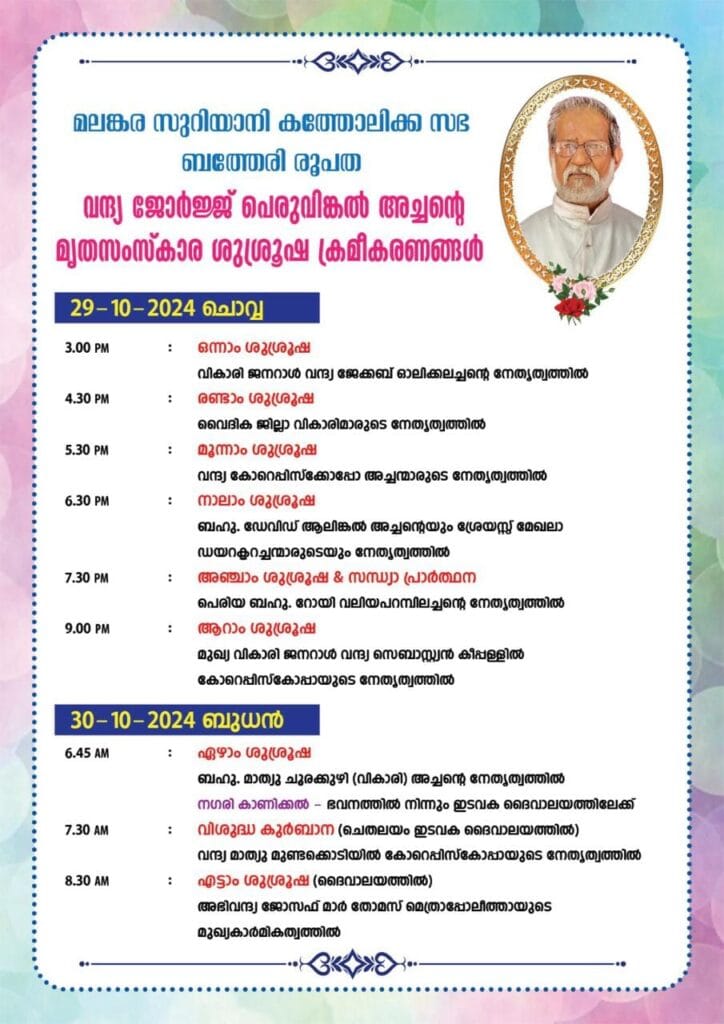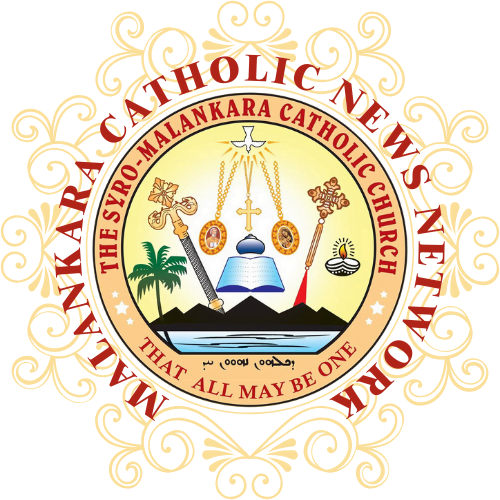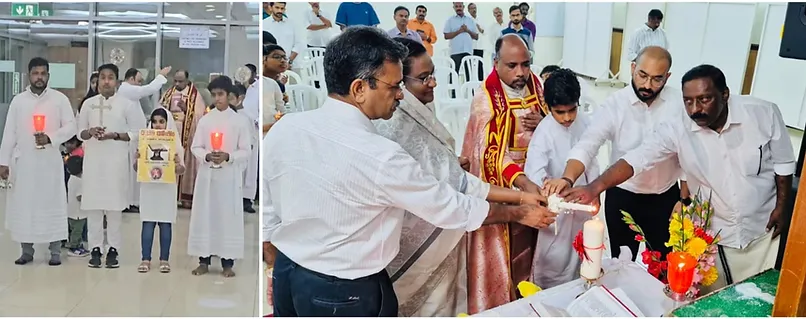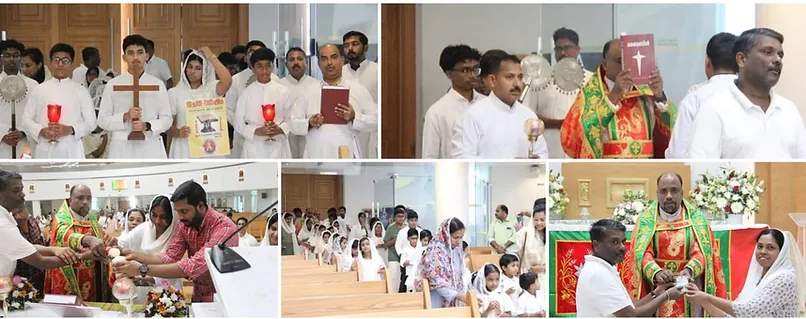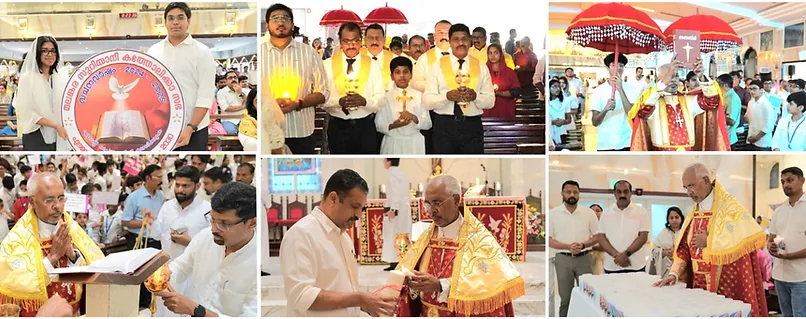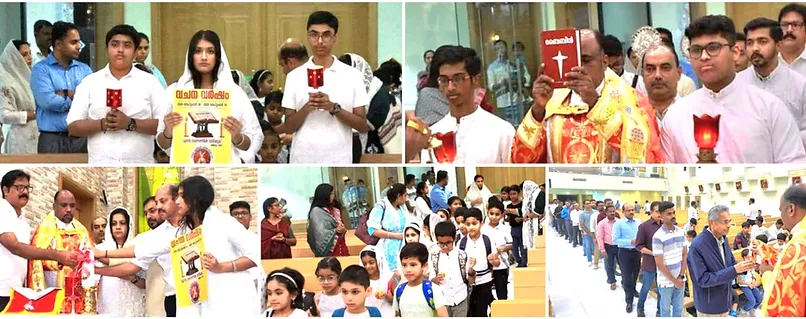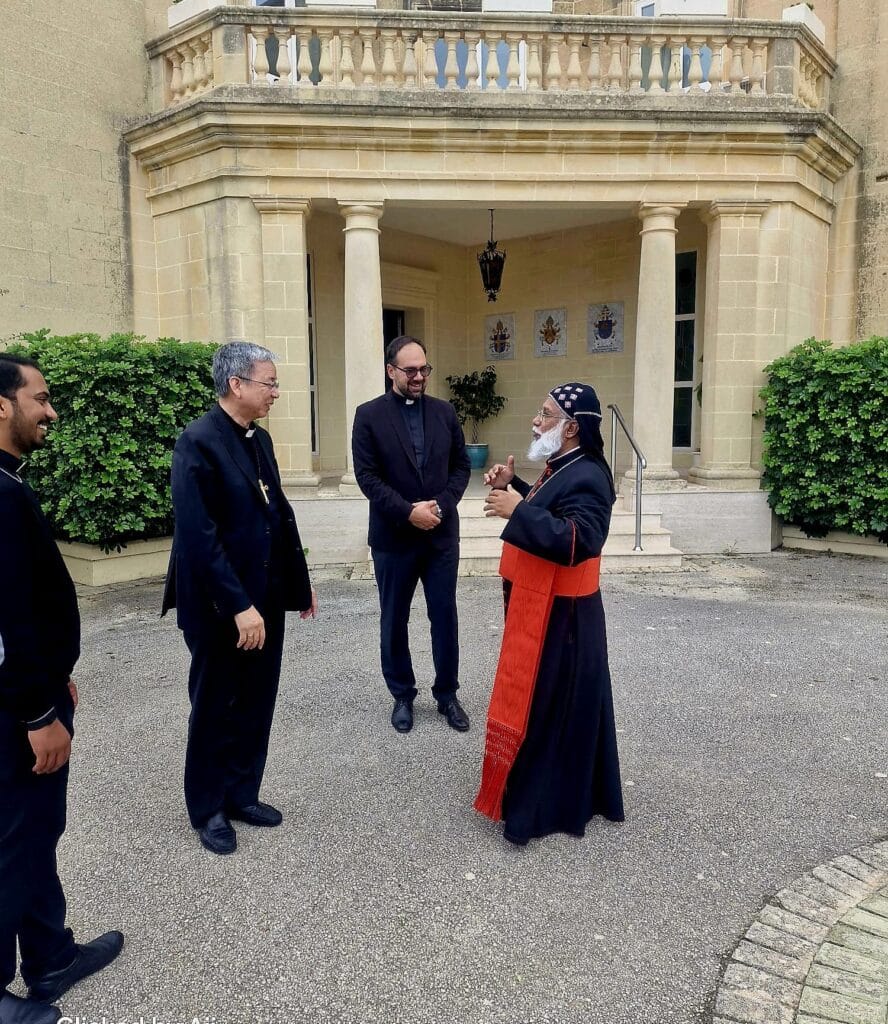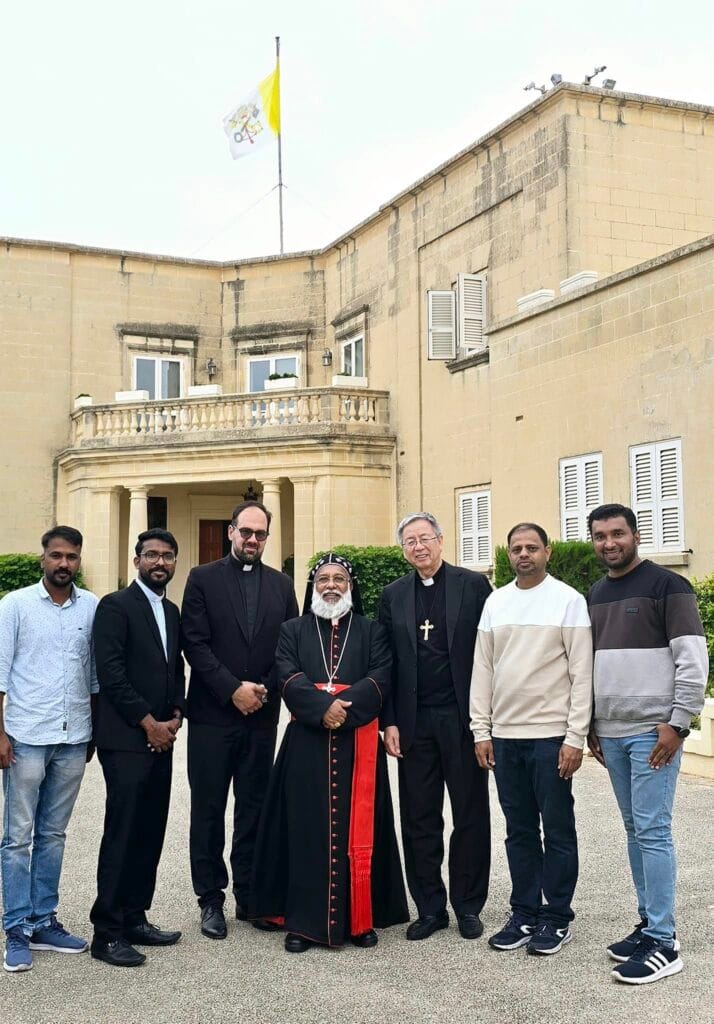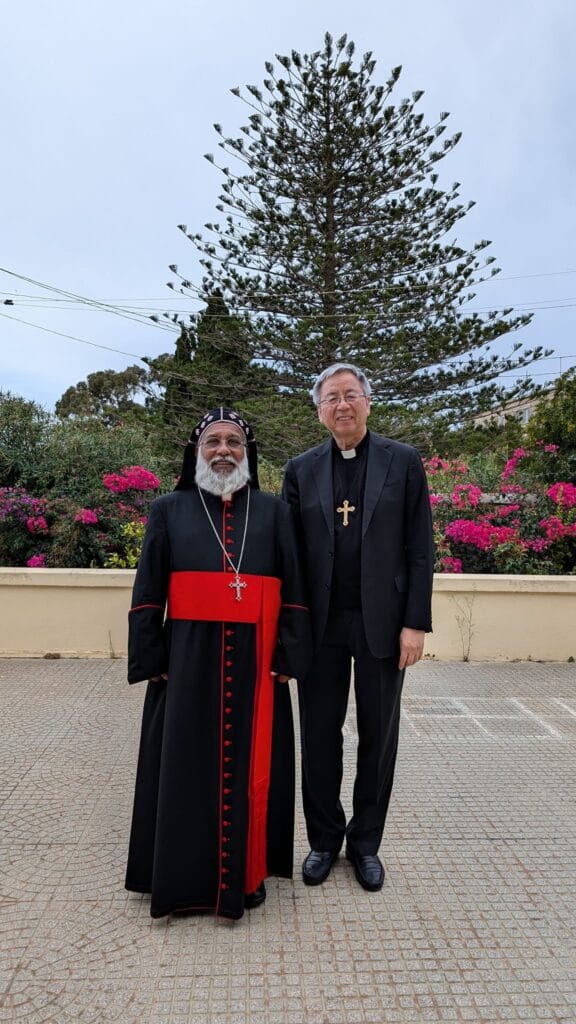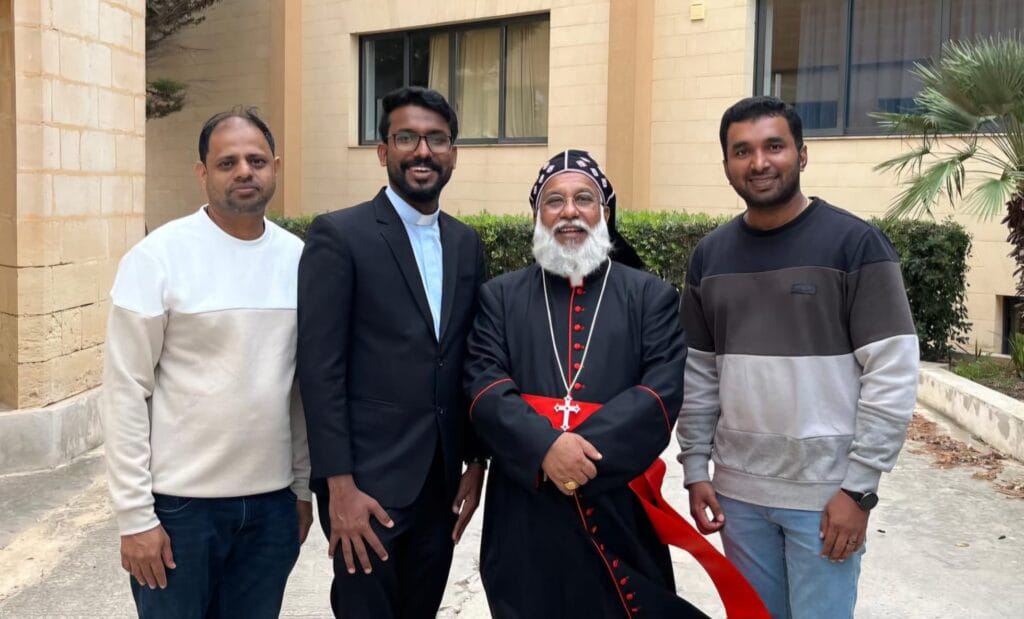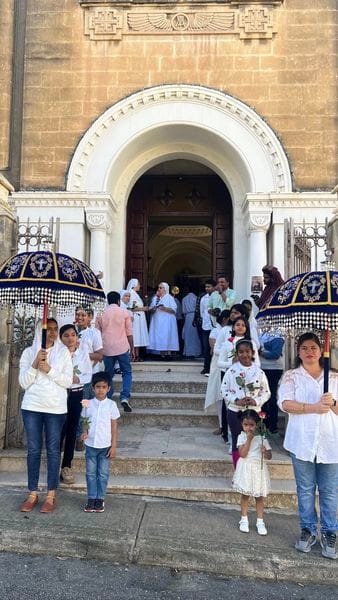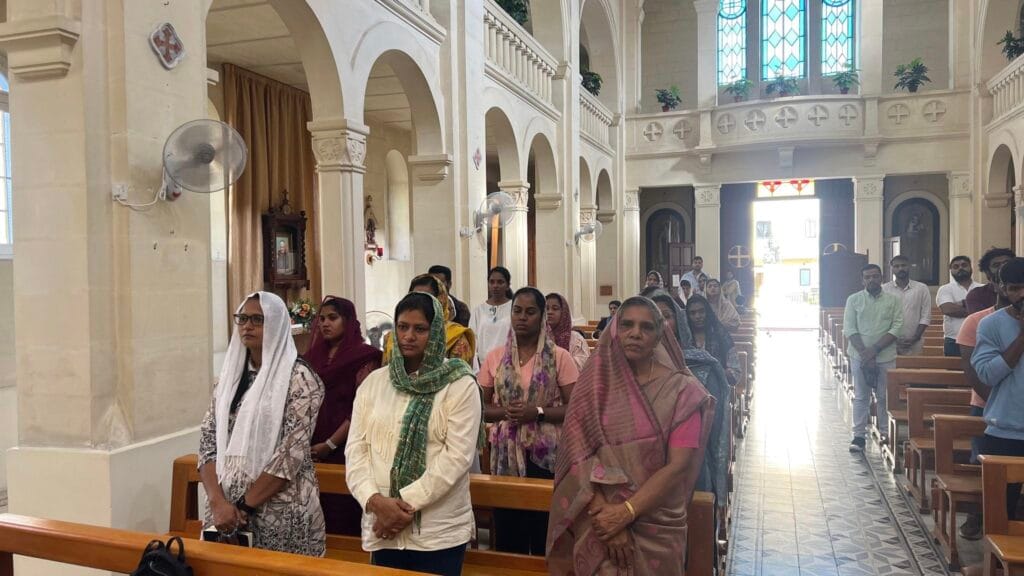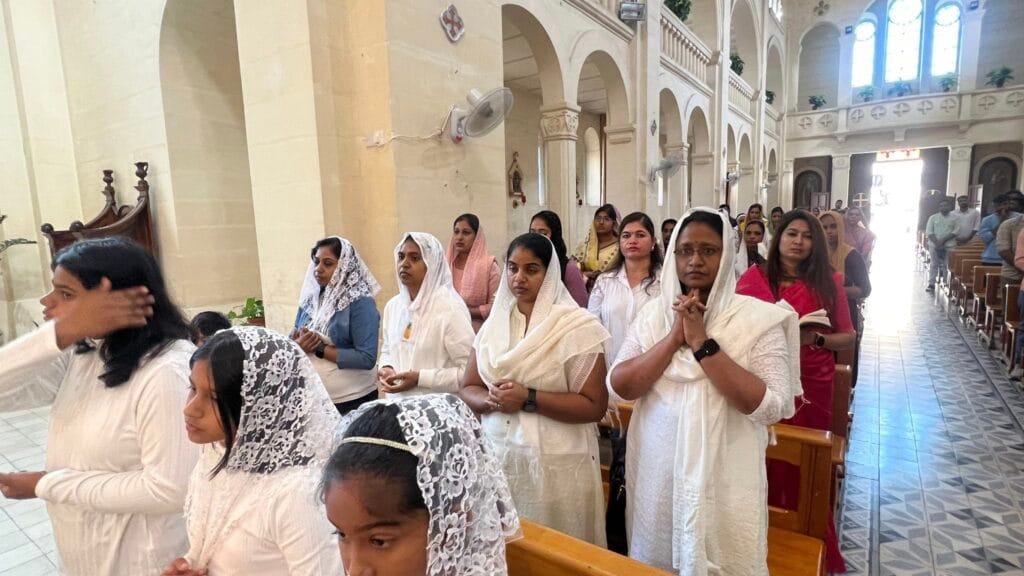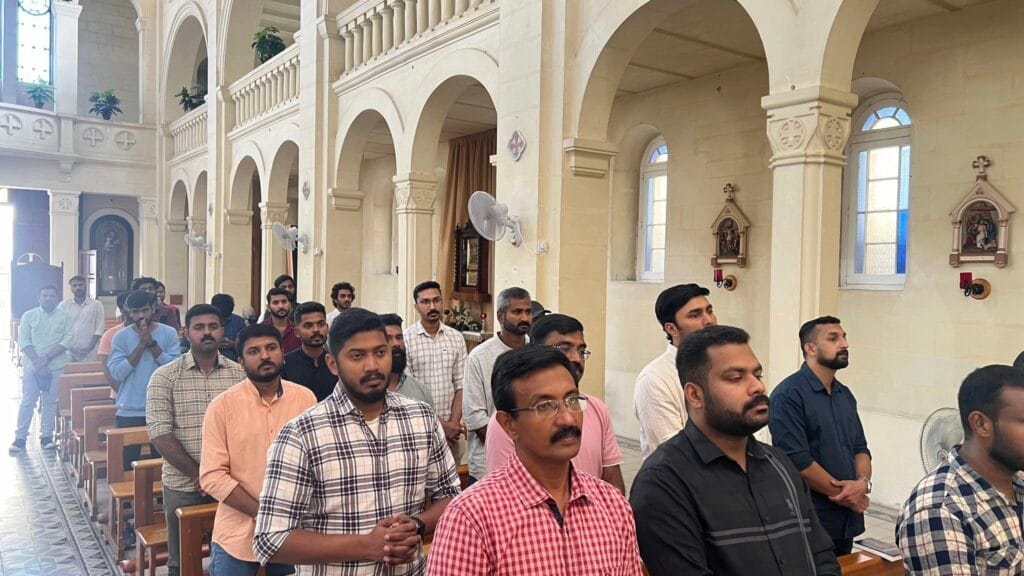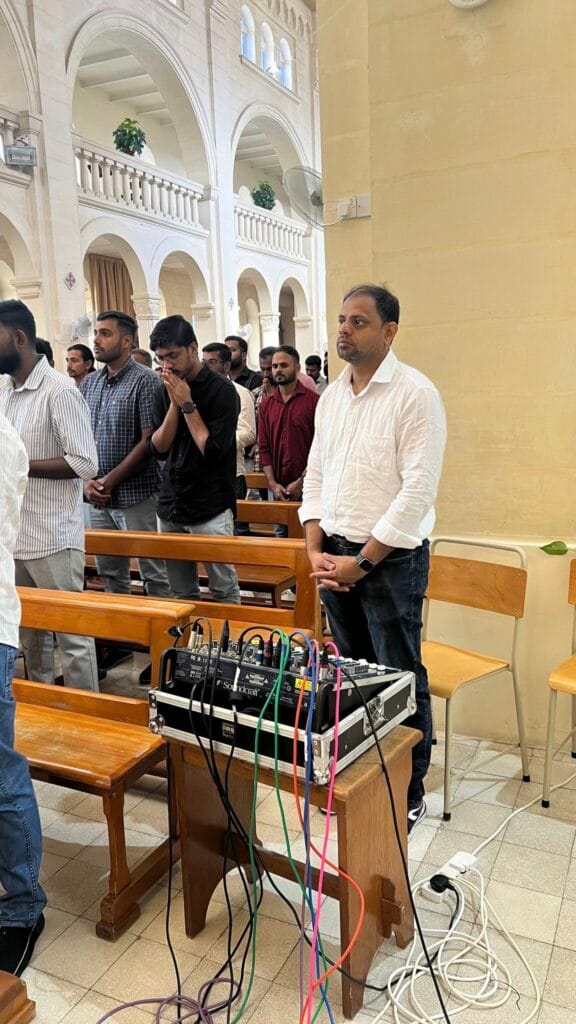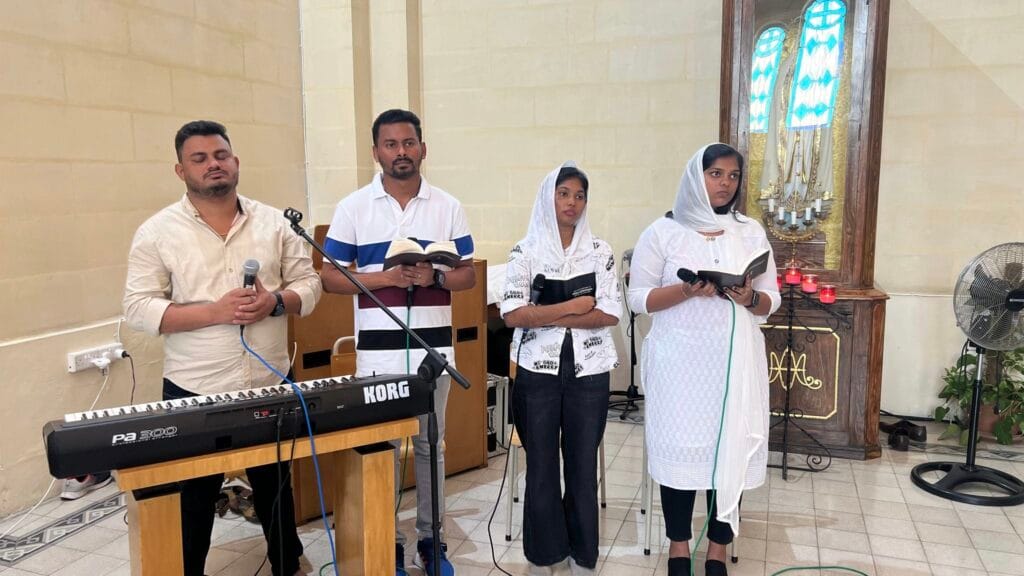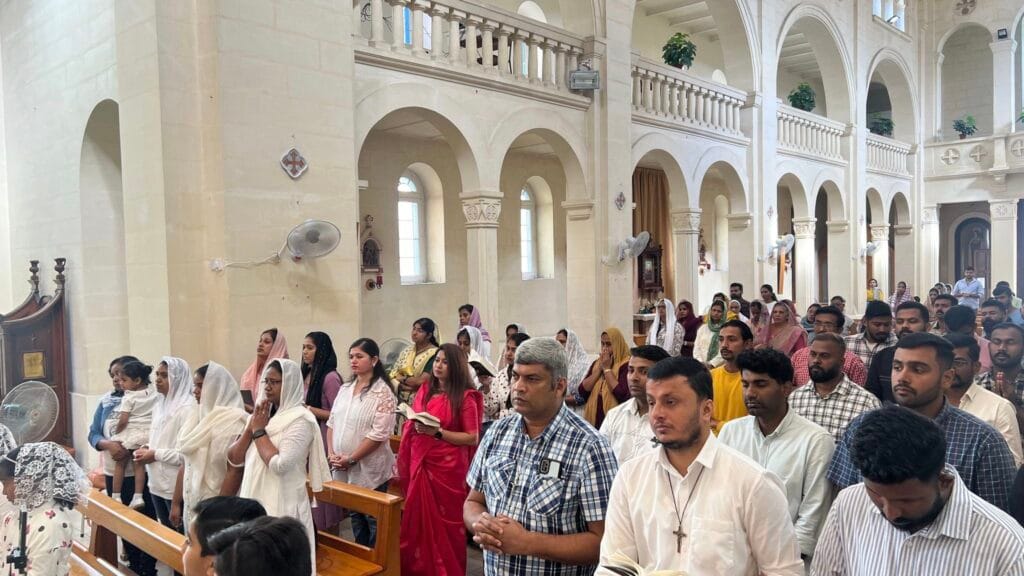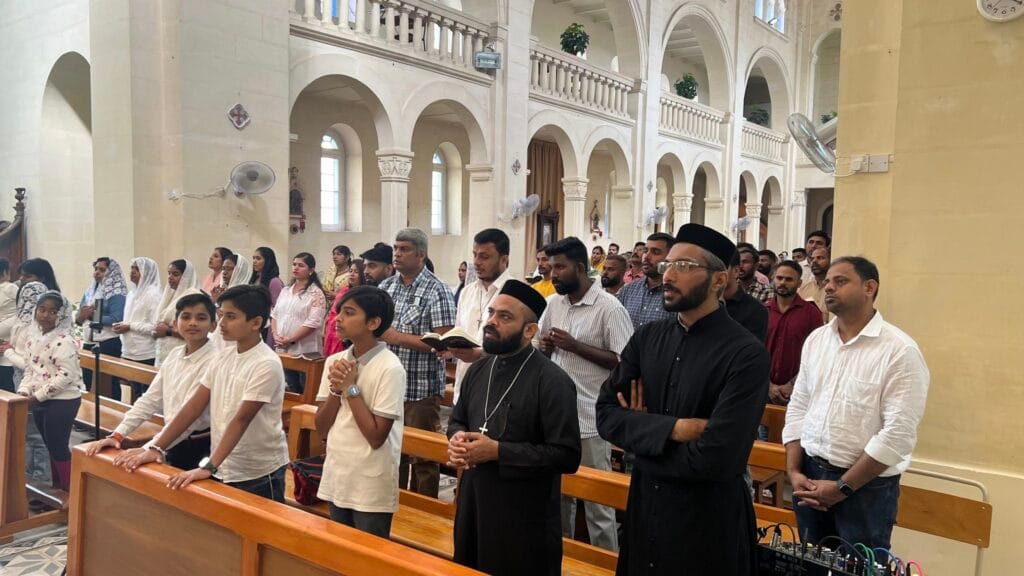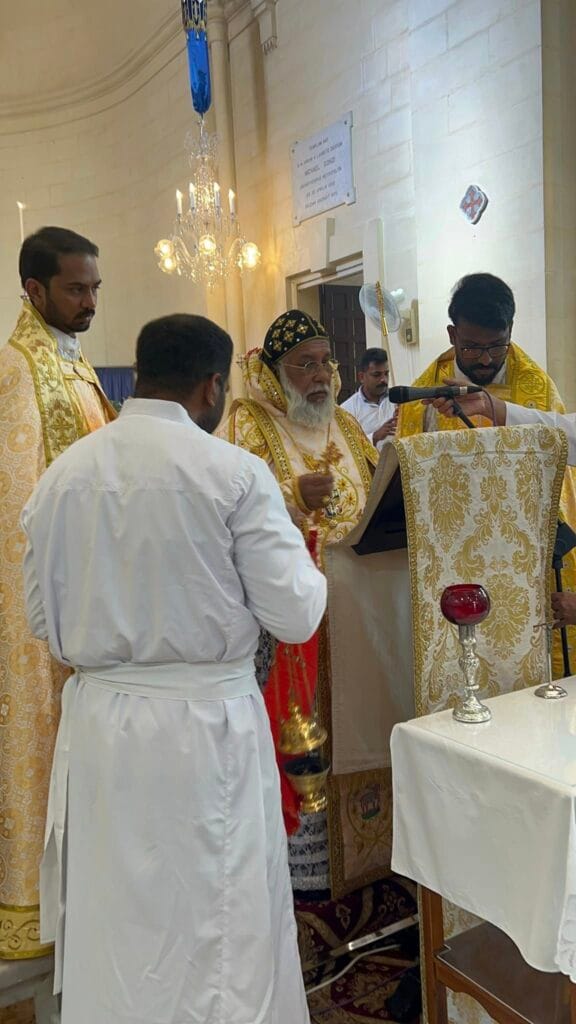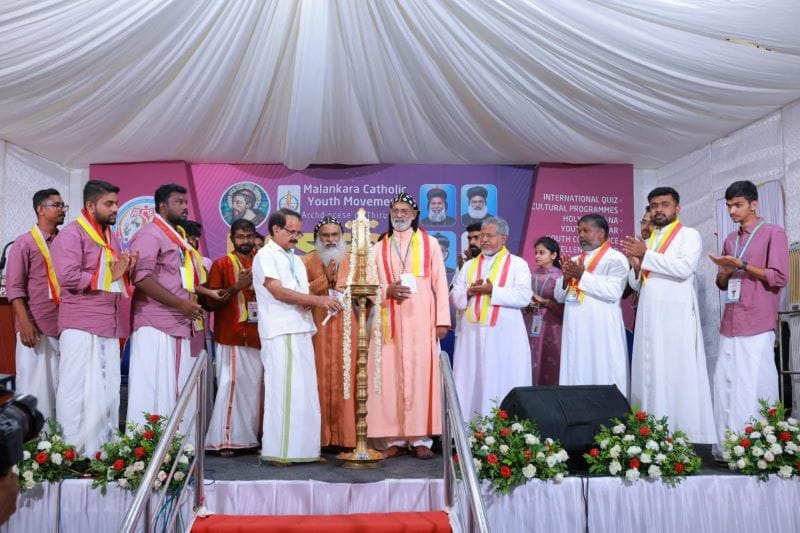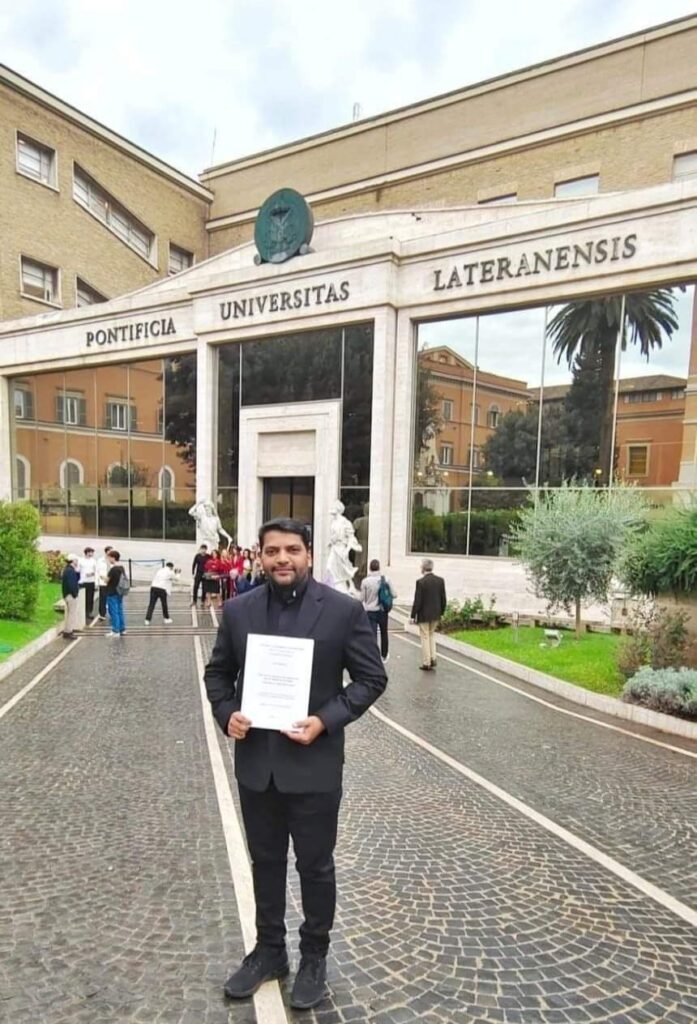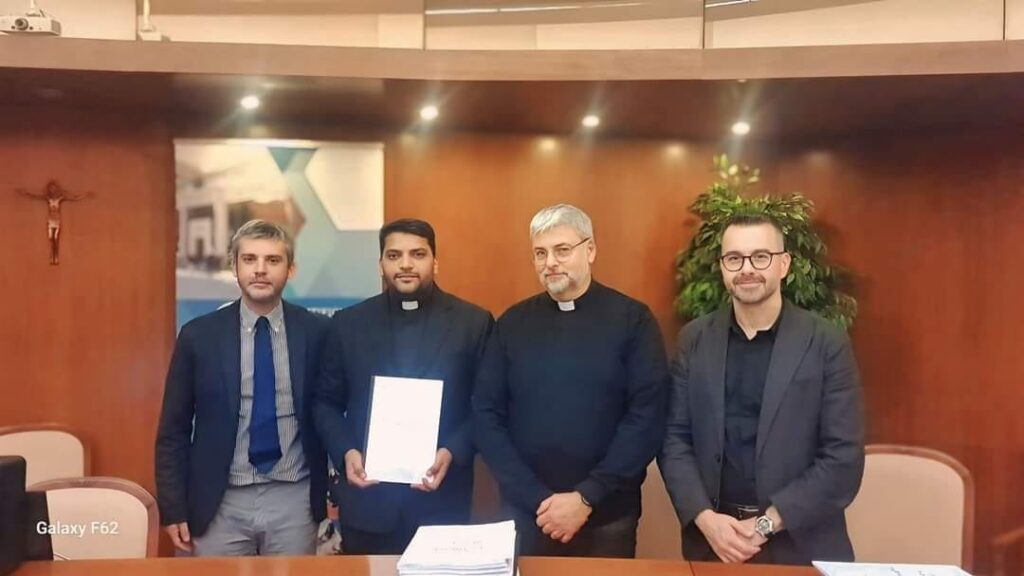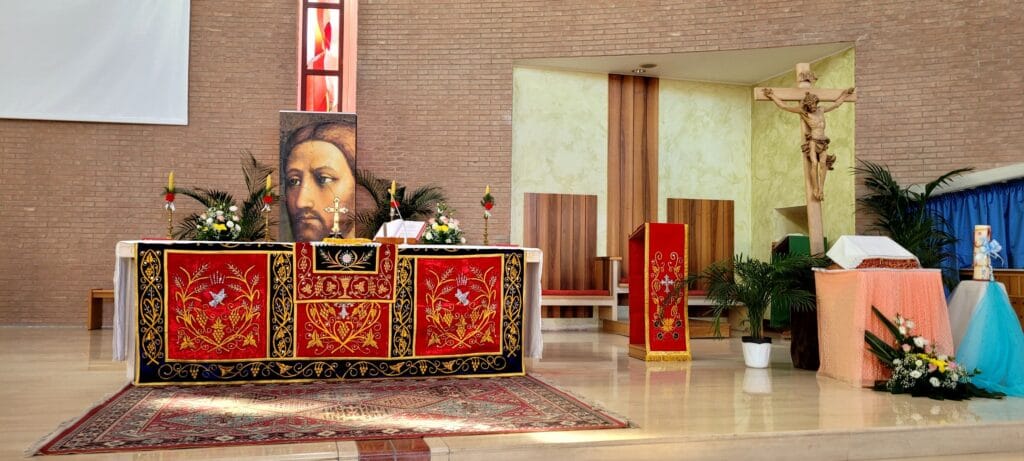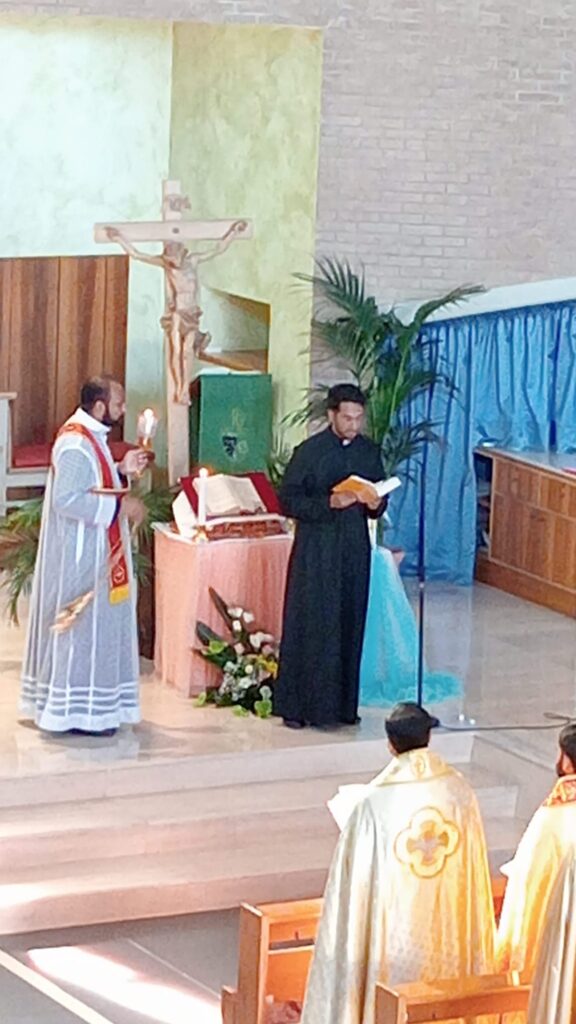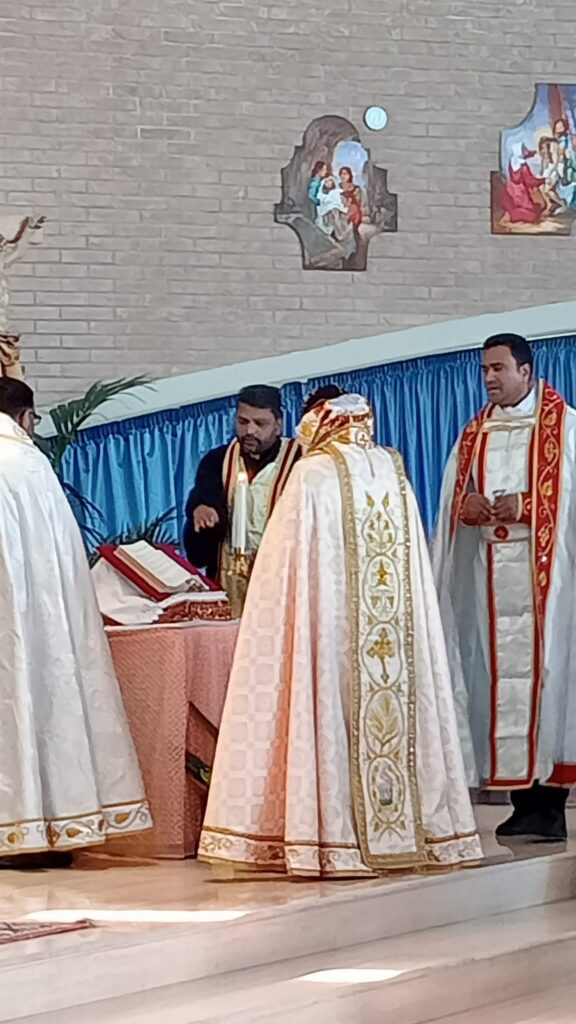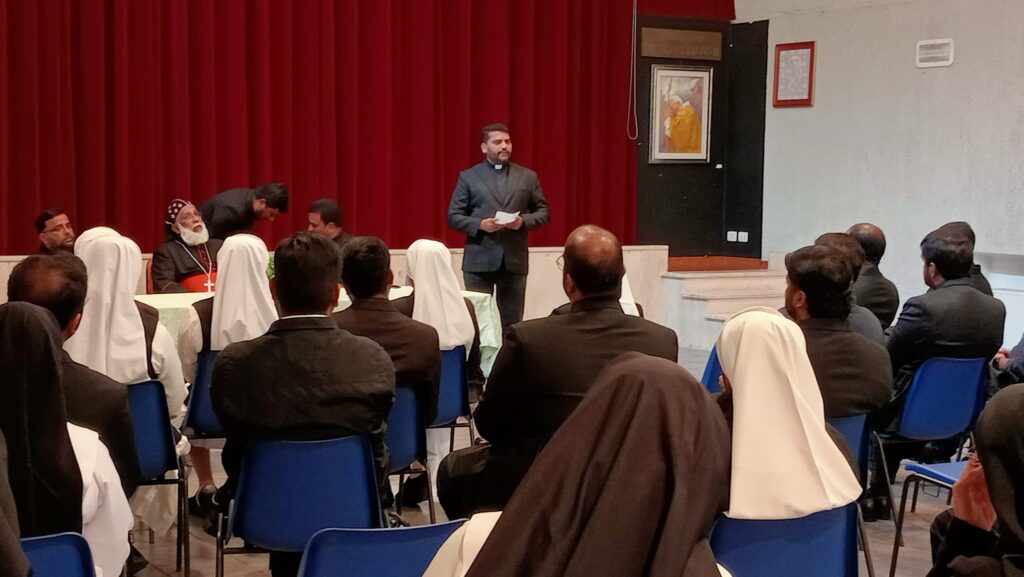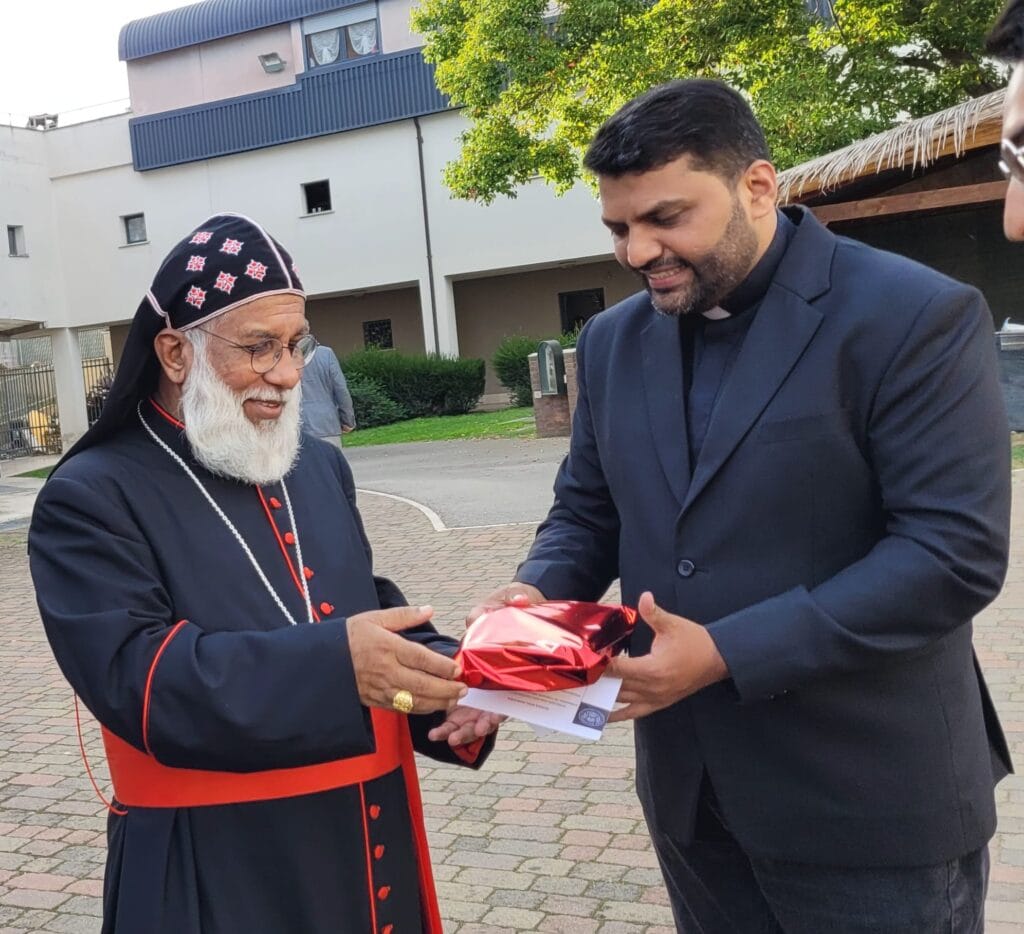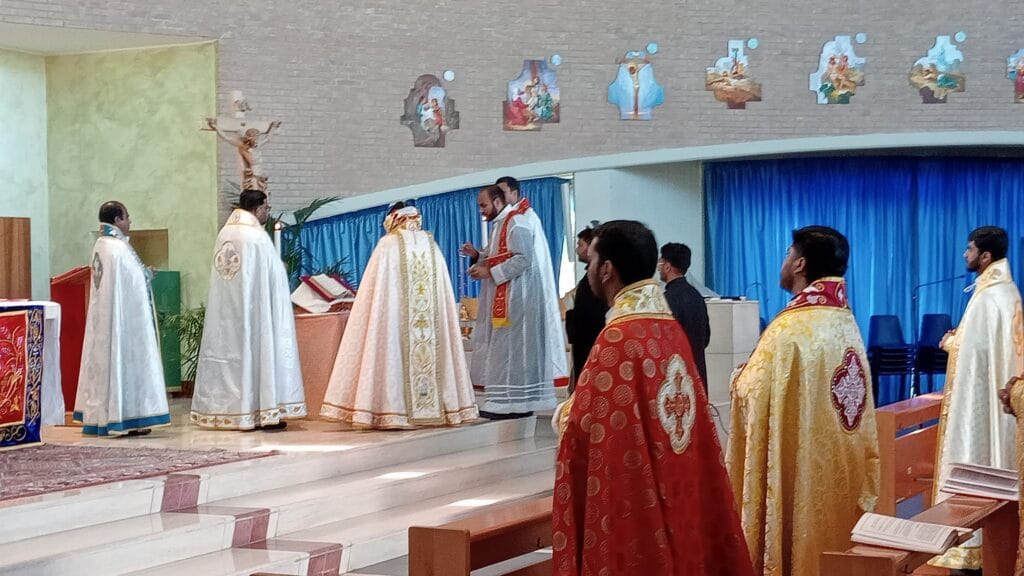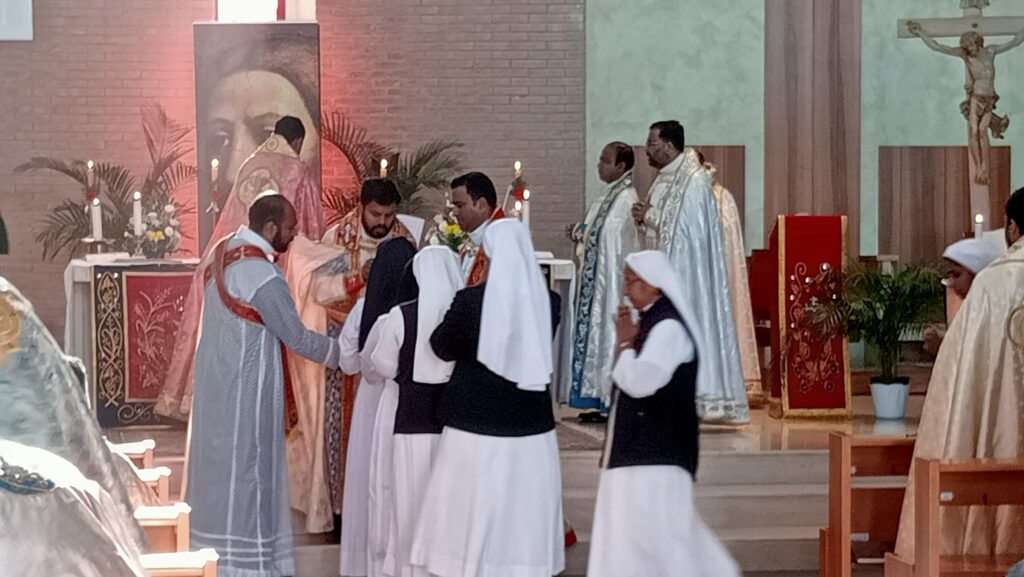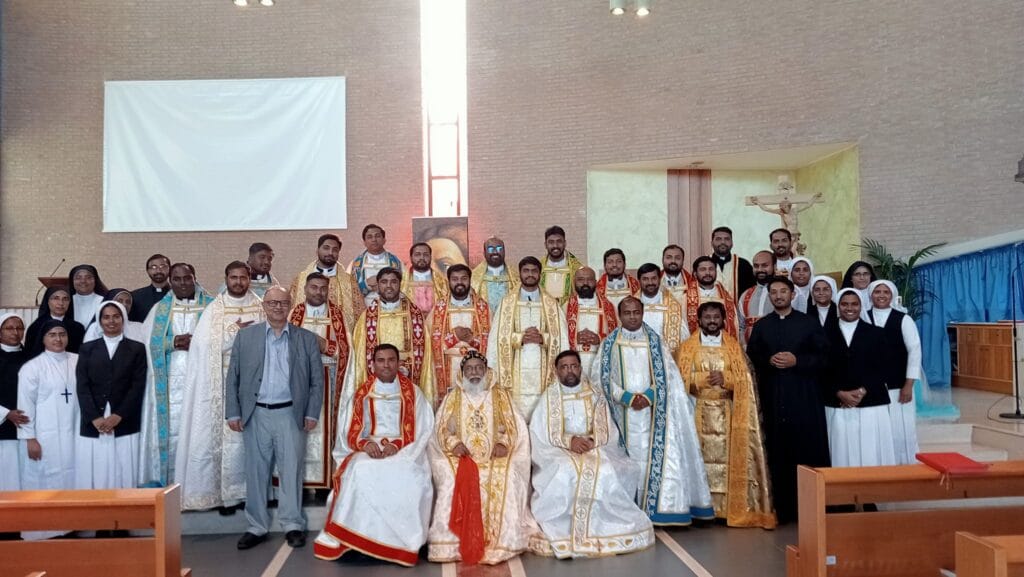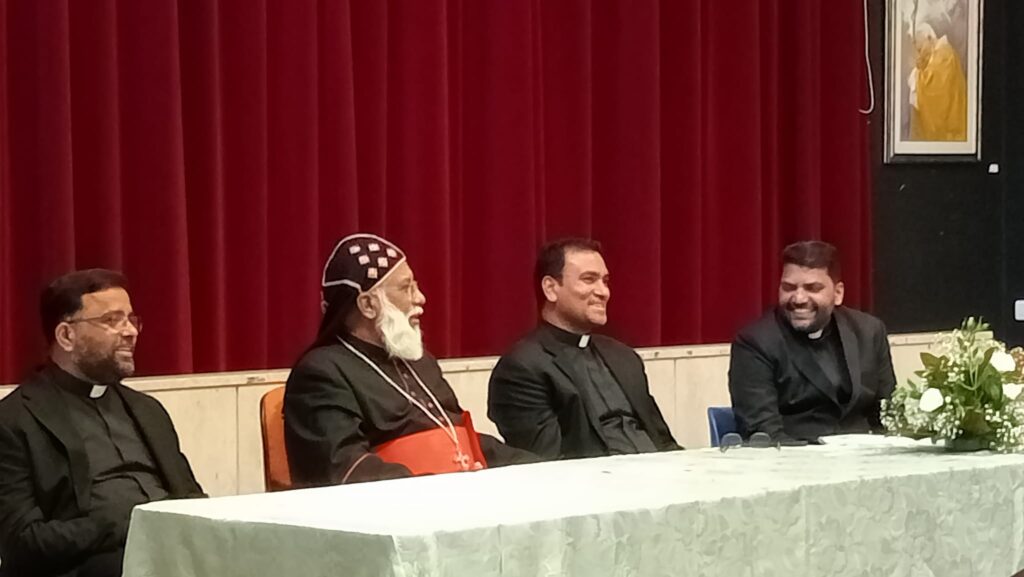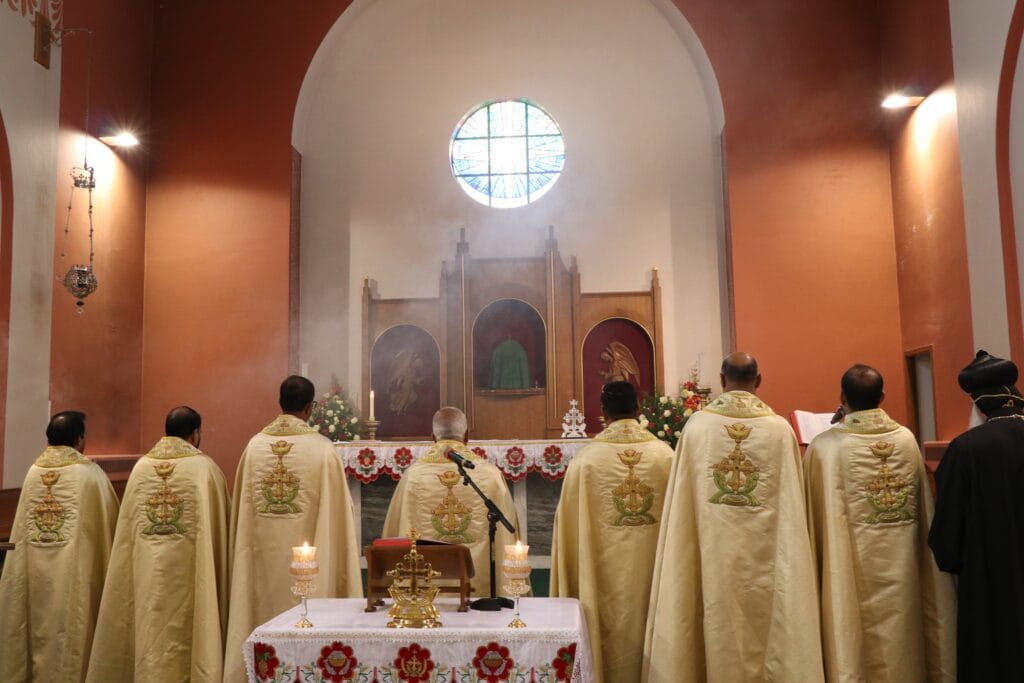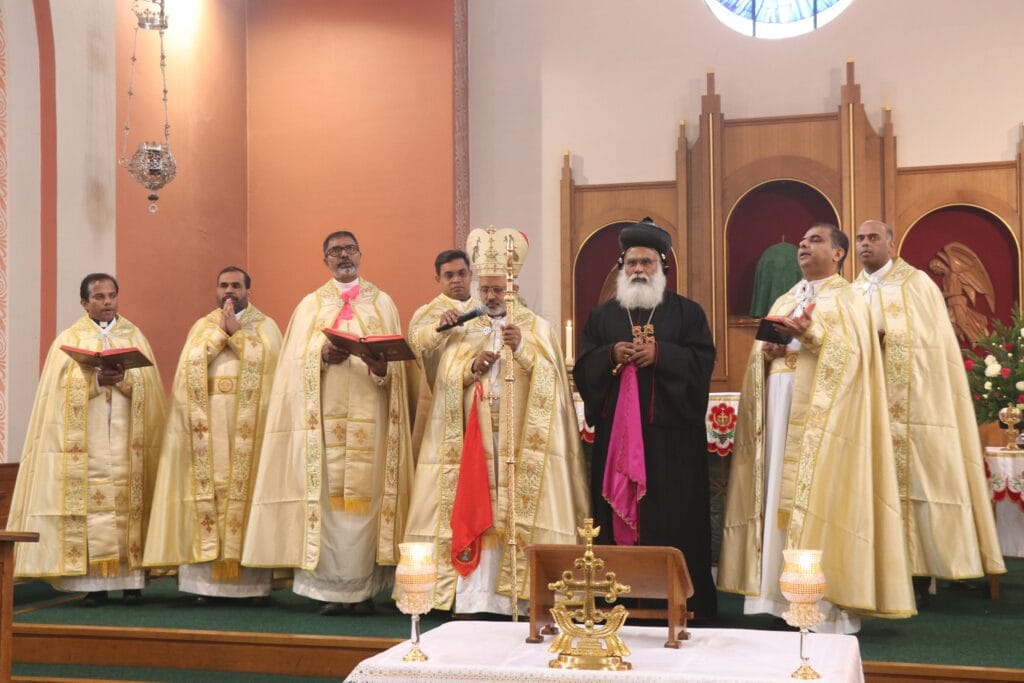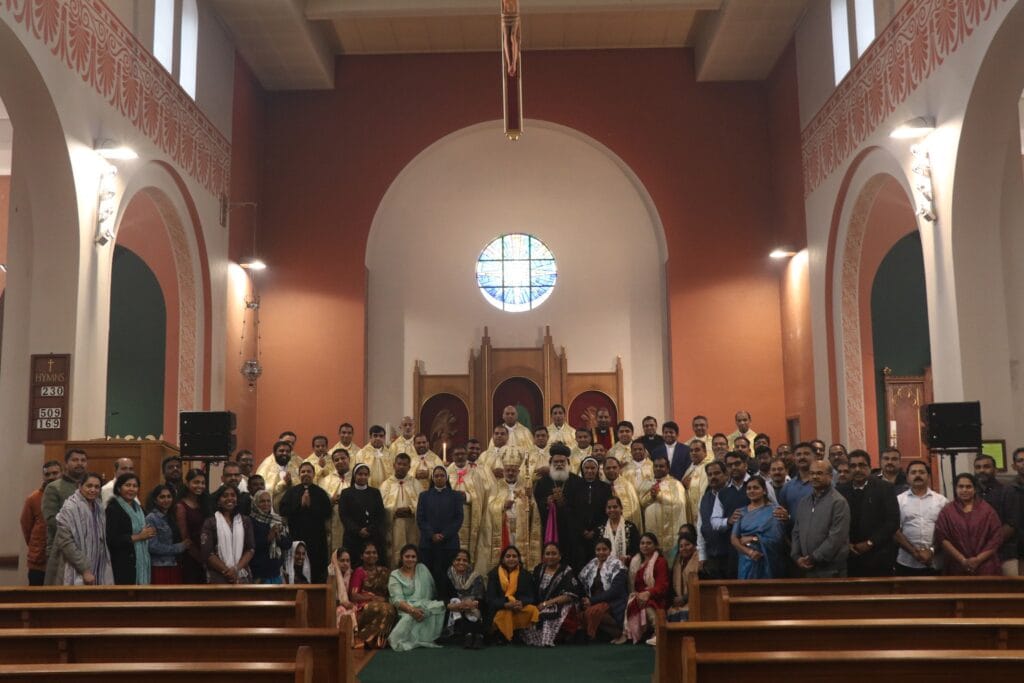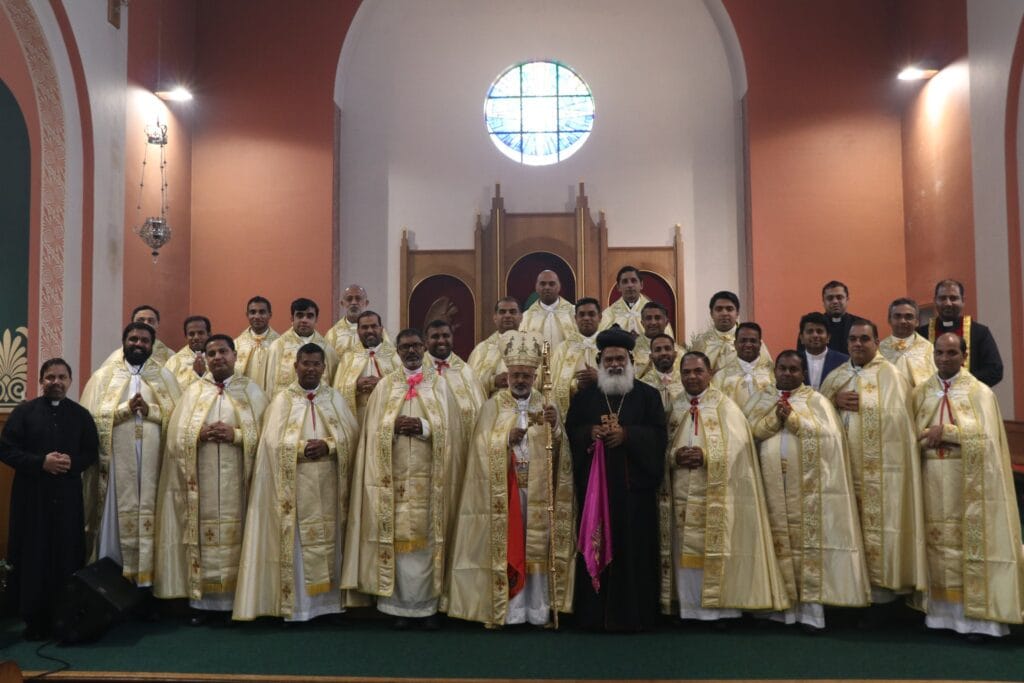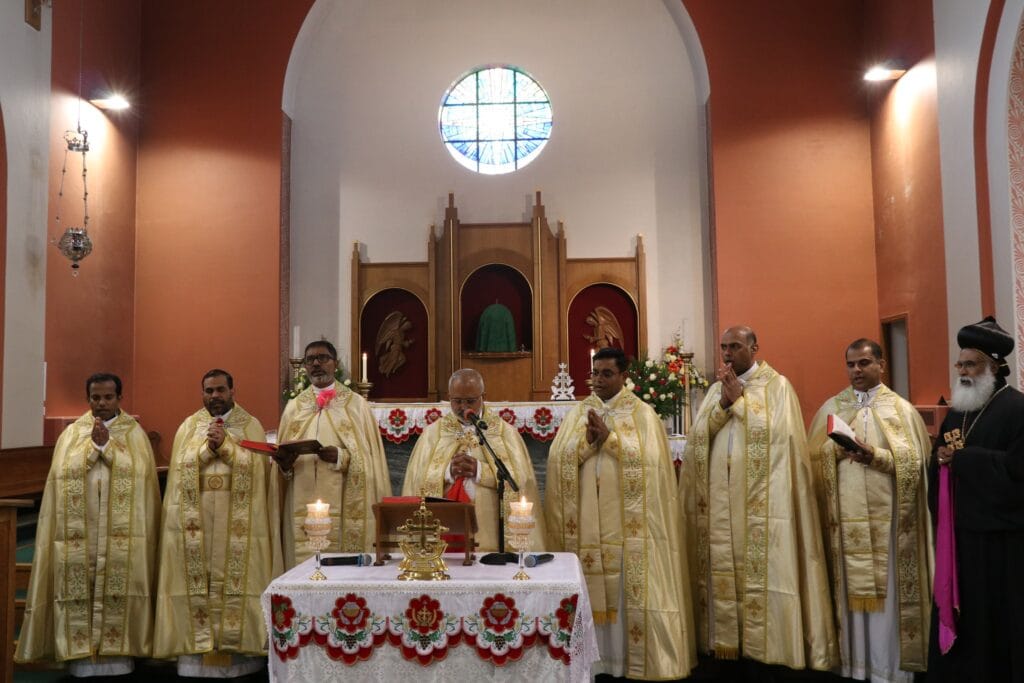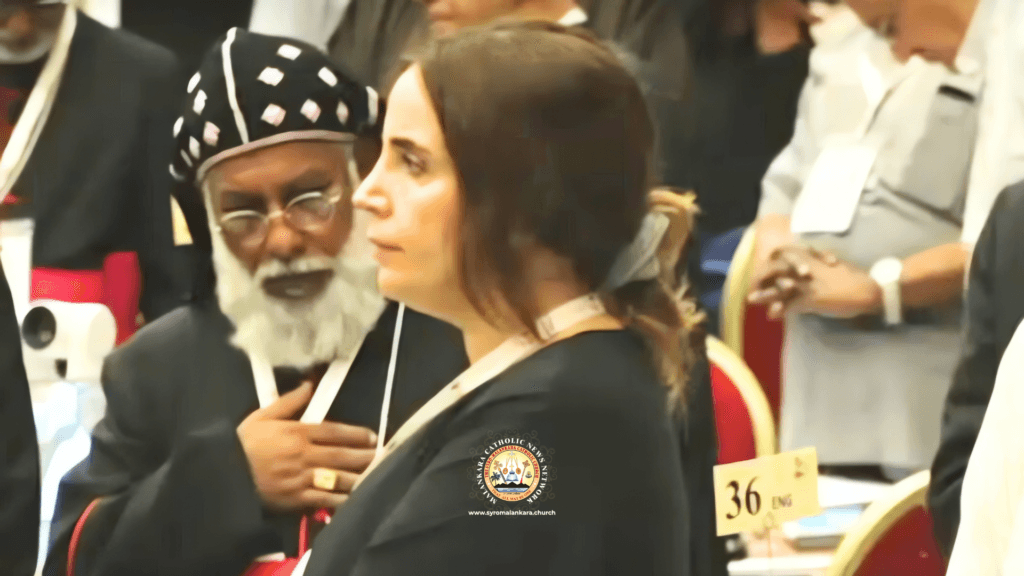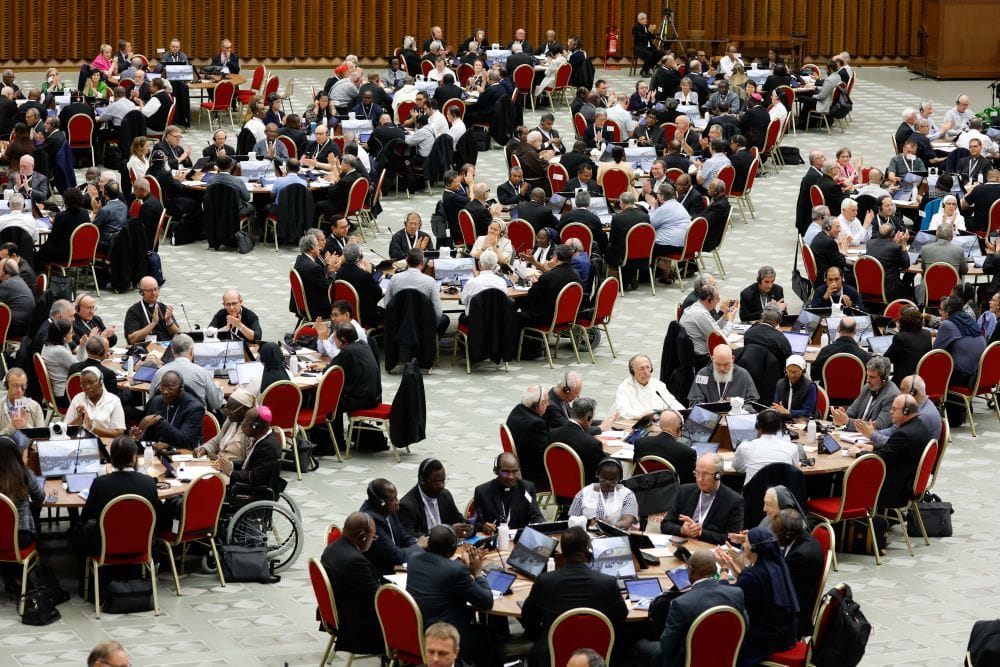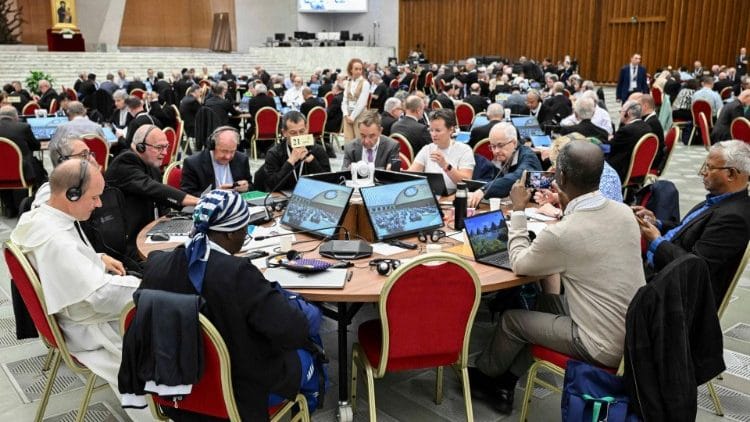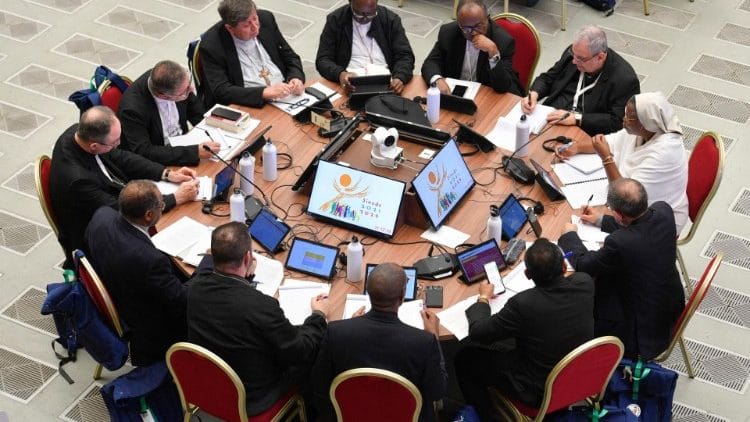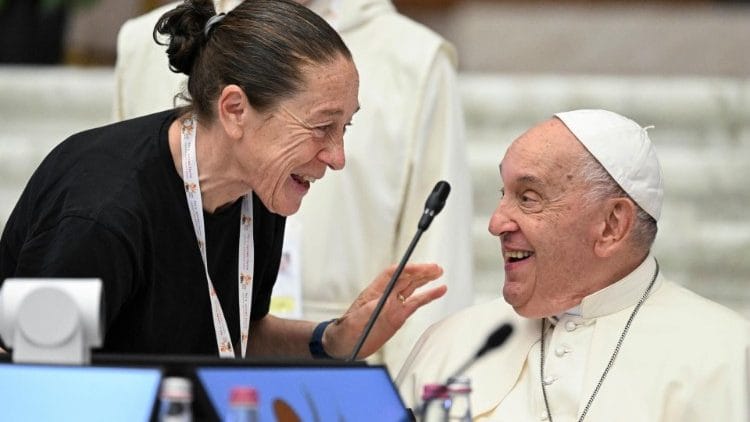In a historic step toward renewing its mission and identity, the Catholic Church has embarked on an unprecedented journey of synodality—a way of walking together as one people, listening to the Spirit, and responding to the needs of the world. The XVI Ordinary General Assembly of the Synod of Bishops has set the stage for a transformative reimagining of how the Church engages with its faithful and the wider world.
The Assembly’s final document, rich with theological reflection and practical insights, explores the heart of synodality and its call to communion, participation, and mission. Through this synodal journey, the Church is seeking to rediscover its core identity while embracing the complexities and opportunities of our times. From fostering deeper relationships to rethinking decision-making processes, this vision offers a blueprint for a more inclusive, participatory, and missionary Church.
In the summaries that follow, the major themes of the document are broken down into key sections, providing a glimpse into how the Church plans to chart its future. Each section reflects the Assembly’s commitment to listening, discernment, and action, as it casts its net into deeper waters for an abundant catch of unity, renewal, and hope.
This synodal vision is not just a call to reform but an invitation to all members of the Church—clergy, laity, and religious alike—to step into their role as missionary disciples, shaping a Church that truly walks together in faith, service, and love.
Part I: The Heart of Synodality – A Public-Oriented Summary
Rediscovering Synodality: A Renewed Call
The Church, as the People of God, is on a journey of rediscovery—of walking together in faith, guided by the Holy Spirit. Part I of the Synod document delves into the theological and spiritual essence of this journey, presenting synodality as the very heartbeat of the Church. It is not just a process or structure but a way of living and being that reflects the Gospel’s call to unity, diversity, and mission.
Baptism: The Foundation of Our Unity
At the core of this vision lies the shared identity given through Baptism. Baptism is not merely a ritual; it is a transformative act that calls every believer into the communion of the Trinity and equips them for mission. This universal sacrament bestows equal dignity upon all, making the entire People of God co-responsible for the Church’s life and mission. The document reminds us that every baptised person is a missionary disciple, entrusted with the task of witnessing to the Gospel in their unique way.
A Church Rooted in Communion
Synodality stems from the Church’s understanding as a communion of believers—a community united by the Eucharist, the Body of Christ. The Eucharist serves as both the source and summit of the Church’s life, bringing together diverse members into one harmonious body. This unity, however, is not uniformity. Instead, it is a dynamic relationship where differences—of culture, tradition, and perspective—are celebrated as gifts of the Spirit.
Listening as a Path to Transformation
A synodal Church is one that listens deeply—not only to its members but also to the cries of the poor, the marginalised, and the suffering. This listening is not passive but transformative, requiring a conversion of heart. The document acknowledges that the wounds of history, such as inequality and division, continue to bleed within the Church. It calls for a Church that is merciful, capable of embracing its flaws, and committed to healing the scars of humanity.
The Prophetic Nature of Synodality
Synodality is more than an internal renewal; it is a prophetic witness to the world. In an age marked by individualism and division, the Church’s call to communion offers a countercultural message of unity and hope. The document envisions a Church that walks alongside all people, engaging in dialogue with other faiths, cultures, and communities to build bridges and foster peace.
Holiness Through Conversion
The synodal journey is inseparable from personal and communal holiness. Conversion—both spiritual and structural—is at the heart of synodality. This requires humility, prayer, and an openness to the Spirit’s guidance. The document urges the Church to be a model of repentance and reconciliation, embodying the mercy it preaches.
A Church of Diversity and Harmony
The Church’s catholicity—the universal nature of its mission—is realised through its diversity. Local traditions, charisms, and ministries are not barriers but enrichments that contribute to the whole. This unity in diversity reflects the Trinity itself, a divine communion of love.
Walking Together Towards the Future
Finally, Part I sets the stage for the rest of the Synod document by framing synodality as a way of walking together toward a future where the Church is more inclusive, participatory, and missionary. It challenges every member of the Church to embrace this journey with courage and faith, trusting in the Spirit’s guidance.
This section serves as a powerful reminder that synodality is not a new invention but a return to the Church’s roots—a rediscovery of its mission to be a light in the world, united in diversity and driven by love. It is a call to each of us to step into this shared journey, bearing witness to a Church that truly listens, heals, and walks together in faith.
Part II: On the Boat, Together – A Public-Oriented Summary
A Journey of Relationships
Part II of the Synod document shifts focus from the theological foundations of synodality to the relationships that sustain and animate the Church. The metaphor of the disciples fishing together on Lake Tiberias after Easter captures the essence of this section: the Church’s journey is not one of isolated individuals but a community that works together, guided by Christ.
This section emphasises that synodality is not merely a process—it’s a way of building relationships. These relationships are essential to the Church’s vitality and its mission in the world.
Renewing Bonds Within the Church
The Synod calls for a profound conversion in how the Church relates to its members and the wider world. Many participants in the synodal journey expressed joy at being heard, while others shared their pain at feeling excluded or judged. These stories highlight the need for the Church to nurture relationships built on respect, inclusion, and love, especially with those who feel marginalised due to their marital status, identity, or sexuality.
The section underscores that genuine relationships—modelled after Christ’s encounters in the Gospels—are not tools for efficiency but central to the Church’s witness. When relationships reflect the love of the Trinity, they become signs of God’s presence in the world.
Listening Like Jesus
The document points to Jesus as the ultimate model of relational conversion. In the Gospels, Jesus listens attentively to everyone—be they sinners, the sick, or outcasts. He meets people where they are, heals their wounds, and reveals the face of the Father through love and compassion. The Church is called to follow this example by fostering relationships that restore dignity and hope.
Addressing Inequalities
One of the Synod’s most significant calls is to confront the inequalities that exist both within the Church and in the wider world. Inequality between men and women, racial prejudices, caste divisions, and discrimination against the poor, disabled, and migrants are all highlighted as barriers to the Church’s mission of unity. The Synod acknowledges that these structures of sin are not only present in society but have also taken root in the Church.
A particularly striking aspect of this section is the recognition of women’s experiences. The Synod notes that many women, lay and consecrated, have voiced their pain over being undervalued and excluded. The Church is urged to build relationships that honour the equal dignity and reciprocity between men and women, rooted in the Gospel’s message.
Relationships in Context
The document recognises that the Church operates within a plurality of cultural contexts, each with unique challenges. While cultures enrich the Church’s mission, they can also perpetuate harmful practices that contradict the Gospel. The Church is called to be a witness of hope and transformation, confronting issues such as exploitation, discrimination, and environmental degradation.
Healing Wounded Relationships
The Synod also confronts the wounds caused by scandals and abuse within the Church. Victims and survivors must be listened to with sensitivity and care, and the Church must prioritise their healing and justice. This process is essential not only for rebuilding trust but also for the Church’s credibility as a community of faith and reconciliation.
Learning from the Margins
Listening to those on the margins is presented as a pathway to renewal. The document highlights how the experiences of the poor, minorities, and those excluded by society can teach the Church to embody its mission more fully. These groups often possess a profound understanding of faith, rooted in their reliance on God amidst adversity.
The Role of Ecumenism and Interfaith Dialogue
The Synod envisions relationships extending beyond the Catholic Church. It celebrates progress in ecumenical efforts and calls for greater collaboration with other Christian communities. Additionally, it urges dialogue with other faiths, particularly in regions where interreligious relationships face challenges such as persecution. These efforts reflect the Church’s commitment to unity, peace, and mutual understanding.
A Synodal Church of Encounter
The overarching vision of this section is a Church that thrives on relationships. Like an orchestra, the Church’s beauty lies in its diversity—different cultures, vocations, and perspectives working together for the common good. This harmony, the document asserts, is only possible through the grace of the Holy Spirit.
A Public Invitation
Part II concludes with an implicit invitation to all members of the Church and society to reimagine relationships. Whether within families, communities, or institutions, the Church calls for bonds that reflect God’s love—relationships marked by respect, inclusion, and a shared commitment to justice and peace.
This section is a clarion call for the Church to rediscover its identity as a community of love and solidarity. It challenges every believer to ask: How can we, together, embody the relational transformation Christ calls us to in our homes, parishes, and world?
Part III: “Cast the Net” – A Public-Oriented Summary
Transforming Processes for a Missionary Church
Part III of the Synod document shifts focus to the structures and processes that shape the Church’s mission and decision-making. The title, “Cast the Net,” symbolises the Church’s call to renewal and action, inspired by the Gospel story where Jesus instructs His disciples to cast their nets into deeper waters. This section explores how the Church can adapt its systems to become more transparent, participatory, and accountable, in line with its synodal vision.
Ecclesial Discernment: Listening to the Spirit
The Synod highlights the importance of discernment as a collective practice, not just a clerical one. Discernment is about listening to the Holy Spirit through prayer, dialogue, and engagement with the realities of the world. It requires humility and openness to being challenged by new insights from the People of God. This process ensures that decisions are rooted in faith and serve the Church’s mission.
Renewing Decision-Making Structures
Decision-making in the Church, often seen as hierarchical, is reimagined in this section. The Synod envisions a Church where decisions are made collaboratively, respecting the diverse voices within the community. This involves:
- Participatory Bodies: Strengthening the role of councils, synods, and assemblies at local, regional, and global levels to include broader participation.
- Co-Responsibility: Emphasising the shared responsibility of clergy and laity in governance and mission.
- Differentiated Roles: Ensuring that the unique contributions of each group—bishops, priests, religious, and laity—are recognised and integrated.
The aim is to create structures that are flexible, inclusive, and responsive to the needs of the Church and society.
A Culture of Transparency and Accountability
The document underscores that transparency and accountability are essential for building trust and credibility. This includes:
- Clear Communication: Sharing decisions and their rationale with the faithful.
- Regular Evaluation: Assessing the effectiveness of pastoral initiatives and governance structures.
- Ethical Practices: Ensuring that resources—financial, human, and spiritual—are used responsibly and equitably.
Such practices reflect the Gospel’s call to integrity and stewardship, reinforcing the Church’s witness in a sceptical world.
Challenges to Synodal Governance
The Synod acknowledges the resistance and fatigue that can arise from adapting to new ways of decision-making. Change can be uncomfortable, particularly when it challenges entrenched power dynamics. However, the document insists that this transformation is necessary to reflect the Church’s identity as a community united in Christ. Synodality is not an optional addition but a rediscovery of the Church’s essence.
Transparency and Accountability as Witness
In a world increasingly wary of institutions, the Church’s commitment to accountability serves as a powerful witness. By embracing a culture of evaluation and openness, the Church demonstrates its readiness to learn from its mistakes and renew its structures. This is not only an act of governance but also an expression of faith.
“Missionary Transformation” Through Renewal
The section concludes by linking these structural changes to the Church’s mission. A participatory, accountable Church is better equipped to respond to the needs of the modern world. This involves:
- Adapting Processes: Ensuring that governance structures are mission-oriented and inclusive.
- Fostering Collaboration: Encouraging unity between different communities, cultures, and traditions.
- Empowering the Laity: Providing laypeople with the resources and authority to contribute meaningfully to the Church’s mission.
A Public Invitation
Part III is not just a blueprint for internal reform but a call to action for all believers. It invites the faithful to take ownership of their role in the Church’s mission, participating actively in its governance and outreach. The vision is for a Church that reflects the Gospel’s values not only in its teachings but also in its practices.
This section challenges the Church to cast its net wider, embracing new ways of working together for the Kingdom of God. It inspires hope for a future where the Church’s structures embody the love, justice, and mercy it proclaims. The question it leaves us with is simple yet profound: How can we, as a Church, create processes that truly reflect the unity and mission we are called to live?
Part IV: An Abundant Catch – A Public-Oriented Summary
Building and Strengthening the Church’s Bonds
Part IV of the Synod document, titled “An Abundant Catch,” reflects on the bonds that hold the Church together as a global and local community. Using the metaphor of a bountiful net filled with fish, this section examines how the Church can cultivate unity in diversity, enhance collaboration, and deepen its relationships across cultures, traditions, and ecclesial structures.
Rooted Yet Pilgrim: Embracing Identity and Change
The Church is described as both firmly rooted in its identity and constantly on a journey as a pilgrim people. This dual nature calls the Church to remain anchored in the Gospel while being open to new realities. The Synod emphasises the importance of balancing tradition and innovation, recognising that faith must be lived in dynamic engagement with the evolving world.
The Church’s bonds are not static; they grow and adapt as the community journeys together. The synodal vision challenges the Church to maintain its unity while celebrating the richness of its diverse traditions and local contexts.
The Exchange of Gifts: Celebrating Diversity
A key theme is the “exchange of gifts” within the Church. The Synod highlights how different local Churches, traditions, and cultures contribute to the global Church’s vitality. This diversity is not a source of division but a reflection of the Church’s catholicity—a universality enriched by particular expressions of faith.
The document calls for greater collaboration and sharing between local and universal Church communities, urging the faithful to recognise the value of contributions from different parts of the world. For instance, the spirituality of indigenous communities or the liturgical traditions of the Eastern Churches are seen as gifts that can inspire and renew the global Church.
The Role of Episcopal Conferences and Assemblies
Episcopal conferences and ecclesial assemblies are recognised as vital structures for fostering unity and collaboration. These bodies are encouraged to act as bridges, connecting local Churches with the universal Church. The Synod calls for these assemblies to embrace their role more fully, promoting dialogue, supporting pastoral initiatives, and ensuring that the voices of the faithful are heard.
The Service of the Bishop of Rome
The Synod reaffirms the role of the Pope as a unifying figure within the Church. The Bishop of Rome is described as a servant of communion, tasked with safeguarding the Church’s unity while respecting its diversity. This role involves promoting dialogue and fostering relationships that strengthen the bonds between local Churches and the global community.
The document calls for a deepening of the Pope’s role as a listener and facilitator, ensuring that the Church remains a cohesive yet diverse family of faith.
Ecumenical and Interfaith Collaboration
This section underscores the importance of ecumenism—working toward unity among Christians of different traditions. It highlights progress made in dialogue with other Christian communities and stresses the need for continued efforts toward reconciliation and collaboration.
The Church is also encouraged to deepen its relationships with other faiths. Dialogue and partnership with other religious traditions are seen as essential for building peace and addressing shared challenges, such as poverty, inequality, and environmental degradation.
Synodality in a Changing World
The document acknowledges that the Church operates in a world where the experience of belonging is changing. Many people feel disconnected from institutions, including religious ones. The Synod calls the Church to respond by fostering a sense of rootedness and community, creating spaces where people can encounter God and one another.
The bonds within the Church must be strong enough to withstand the challenges of modern life, yet flexible enough to embrace new ways of being Church. This includes finding innovative ways to connect with those who feel excluded or marginalised.
A Missionary Church of Unity
Part IV concludes with a vision of a Church that is deeply united yet always outward-looking. Unity is not about uniformity but about harmony—a communion where diverse voices and traditions enrich one another. This missionary spirit is reflected in the Church’s call to go out into the world, sharing the Gospel while respecting and learning from the cultures it encounters.
A Public Invitation
This section invites the faithful to reflect on their role in strengthening the Church’s bonds. It challenges every Catholic to contribute to the unity and mission of the Church, whether through dialogue, collaboration, or acts of service. It asks: How can we, as a community, celebrate our diversity while remaining one in Christ?
Part IV is a rallying cry for unity in diversity. It envisions a Church that thrives on collaboration, both within its community and with the wider world. It reminds us that the net we cast is not only to gather people but also to build a Church that reflects the love and harmony of God’s Kingdom. The abundant catch is not just the souls brought into the Church but the relationships and bonds strengthened along the way.
Part V: “So I Send You” – A Public-Oriented Summary
The Church on a Mission
Part V of the Synod document focuses on the Church’s call to be a missionary community. Drawing inspiration from Jesus’ words, “As the Father has sent me, so I send you” (John 20:21), this section outlines a vision of the Church as a body of missionary disciples. The Church’s mission is not an isolated task but a collective journey, empowering every believer to proclaim the Gospel in their daily lives.
Missionary Discipleship: Everyone’s Calling
The Synod emphasises that all members of the Church—laypeople, clergy, and religious—are called to be missionary disciples. This mission flows from Baptism and is sustained by the Eucharist. It is not limited to preaching but includes every action that reflects God’s love and brings about justice, peace, and reconciliation.
The document highlights the need for the Church to empower the laity, providing them with formation and resources to live out their missionary call. Every vocation, whether in family life, professional work, or ministry, is a field for mission.
Responding to the World’s Challenges
The Church’s mission is shaped by the context in which it operates. The Synod identifies key challenges that the Church must address:
- Social Injustice: The Church is called to advocate for the poor, fight against inequality, and stand with those on society’s margins.
- Environmental Crisis: Inspired by Pope Francis’ Laudato Si’, the Church must work for ecological sustainability and care for creation.
- Loss of Faith: In a world where many feel disillusioned or disconnected from religion, the Church must find new ways to engage, inspire, and accompany people on their spiritual journeys.
This mission requires the Church to go beyond its walls, entering the peripheries of society to serve those most in need.
Accompanying the Marginalised
A recurring theme is the Church’s role as a community of solidarity and inclusion. The document urges the Church to prioritise those who feel excluded, whether due to poverty, disability, or social stigma. Missionary work is not only about spreading the Gospel but also about restoring dignity, healing wounds, and building bridges.
This approach is modelled after Jesus, who consistently reached out to the outcasts of His time. The Church must follow His example, becoming a presence of hope and compassion.
Formation for Mission
The Synod stresses the importance of formation—both spiritual and practical—for all members of the Church. Effective missionary discipleship requires a deep relationship with Christ, nurtured through prayer, Scripture, and the sacraments. At the same time, it demands practical skills, such as cultural sensitivity, communication, and teamwork.
Special attention is given to youth and women, recognising their unique perspectives and contributions to the Church’s mission. By investing in their formation, the Church ensures a vibrant and dynamic future.
Pastoral Creativity
The Church is encouraged to embrace pastoral creativity, finding new ways to carry out its mission in today’s world. This includes:
- Digital Evangelisation: Using technology and social media to reach new audiences.
- Cultural Engagement: Respecting and integrating local traditions into the Church’s life and liturgy.
- Collaborative Models: Fostering partnerships between dioceses, religious communities, and lay movements.
The Synod calls for boldness and imagination, urging the Church to adapt its methods without compromising its message.
Leadership as Service
Missionary leadership is framed as a service, not a position of power. Bishops, priests, and Church leaders are called to lead by example, embodying humility and a spirit of accompaniment. Their role is to equip and support the faithful in their mission, creating a culture of co-responsibility and collaboration.
A Church of Hope
The ultimate goal of the Church’s mission is to bring hope to the world. By proclaiming the Gospel and living out its values, the Church becomes a sign of God’s presence, even in the darkest times. This hope is not abstract but tangible, seen in acts of charity, justice, and reconciliation.
A Public Invitation
Part V concludes with a universal invitation to all members of the Church: to embrace their missionary identity and go forth with courage and faith. It challenges every believer to reflect on how they can bring the Gospel to life in their context. The Synod asks: How can we, as individuals and communities, make Christ’s love present in the world today?
Part V is a powerful call to action. It redefines mission not as the work of a few but as the shared responsibility of the entire Church. The section inspires the faithful to think of mission not as a destination but as a way of life, rooted in love, service, and the hope of the Gospel. It reminds us that being sent by Christ is both a privilege and a profound responsibility, one that calls us to transform the world through His grace.
Conclusion: Continuing the Journey – A Public-Oriented Summary
An Ongoing Synodal Path
The conclusion of the Synod document is not an endpoint but a stepping stone. It emphasises that synodality—walking together as the People of God—is an ongoing journey, not a one-time event. This journey requires the Church to remain open to the guidance of the Holy Spirit, continuously discerning how to live out its mission in a complex and changing world.
The document urges the Church to embrace this process with humility and courage, recognising that the path to renewal is both challenging and transformative.
Listening and Discernment as Cornerstones
The Synod reaffirms the centrality of listening and discernment in the life of the Church. These practices are not limited to formal gatherings but are integral to how the Church operates at every level. Listening is about hearing the voices of all members of the Church, particularly those who feel excluded or marginalised. Discernment involves prayerfully seeking God’s will, allowing the Spirit to lead the Church into new and unexpected directions.
A Call to Synodal Conversion
The conclusion highlights the need for a deep, ongoing conversion—both personal and communal. This conversion is not merely about changing structures or processes but about transforming hearts. It involves letting go of fear, resistance, and self-interest, making room for the Spirit to work within the Church.
The document stresses that this synodal conversion is not optional but essential for the Church to remain faithful to its mission in the world.
A Mission of Unity and Reconciliation
At its heart, the synodal journey is about building a Church that is united in Christ and committed to reconciliation. The document calls for a Church that is a sign of God’s love and mercy, reaching out to heal wounds, bridge divides, and bring hope to those in despair. It envisions a community where all are welcomed, valued, and empowered to participate in the Church’s mission.
Trusting in the Spirit’s Guidance
The conclusion acknowledges that the path ahead is uncertain and fraught with challenges. However, it calls the Church to trust in the Holy Spirit, who has guided it through centuries of change and will continue to do so. This trust is not passive but active, requiring the Church to step forward in faith, even when the way is unclear.
The Role of Every Believer
The document ends with a strong affirmation of the role of every member of the Church in this journey. Synodality is not the responsibility of the clergy or hierarchy alone; it is the work of the entire People of God. Every believer is called to contribute their gifts, perspectives, and prayers to this shared mission.
The Synod asks: How can we, as individuals and communities, walk together more faithfully? How can we embody the Gospel in our relationships, structures, and actions?
A Future of Hope
The conclusion leaves the Church with a vision of hope. It imagines a Church that is vibrant, inclusive, and missionary—a community that truly reflects the love of Christ. This hope is rooted in the promise of the Spirit’s presence and the Church’s shared commitment to the journey ahead.
The conclusion is a rallying cry for perseverance and trust. It challenges the Church to continue its synodal journey with courage and humility, embracing the Spirit’s call to renewal. It inspires the faithful to dream of a Church that is ever more united, participatory, and missionary—a Church that truly walks together as the People of God, bringing light to the world.
A Message from Pope Francis
As the Church reflects on the transformative journey of the Synod, Pope Francis has published a profound note accompanying the Final Document of the XVI Ordinary General Assembly of the Synod of Bishops. This note, a testament to the two-year-long process of prayer, listening, and discernment, entrusts the Document to the global Church with a call for creative implementation and a renewed commitment to communion, participation, and mission.
In his message, Pope Francis highlights that the synodal path has been guided by the Holy Spirit, a unifying presence across continents, languages, and cultures. He acknowledges the journey’s layered process—from local to national and continental phases—culminating in the Assembly’s conclusions. Now, the Pope entrusts the Final Document back to local Churches, encouraging them to implement its vision with discernment and creativity, tailored to their unique contexts.
The Holy Father emphasises that the Final Document forms part of the “ordinary Magisterium of the Successor of Peter,” carrying an authoritative nature while remaining adaptable. It is, as Pope Francis describes, a call for reflection rather than a rigid set of norms, inviting every context to interpret and apply its directions with fidelity and innovation.
This is not the end of the synodal journey but the beginning of its implementation. Local Churches are now tasked with realising the vision of the Document, supported by the General Secretariat of the Synod and the Dicasteries of the Roman Curia. Bishops will play a key role, reporting their progress during their ad limina visits, sharing both challenges and successes as they work toward a synodal Church.
Pope Francis concludes his note with a heartfelt reminder: “The synodal journey needs shared words to be accompanied by deeds.” He expresses his hope that the Holy Spirit, the “harmony” of the Church, will continue to renew and guide her, bringing all the faithful into deeper communion with Christ.
This final message encapsulates the spirit of the Synod—a Church united in diversity, listening deeply, and courageously embracing its mission to serve the world. The work ahead calls for patience, humility, and trust, but it is guided by the enduring promise of renewal and hope through the Spirit.
